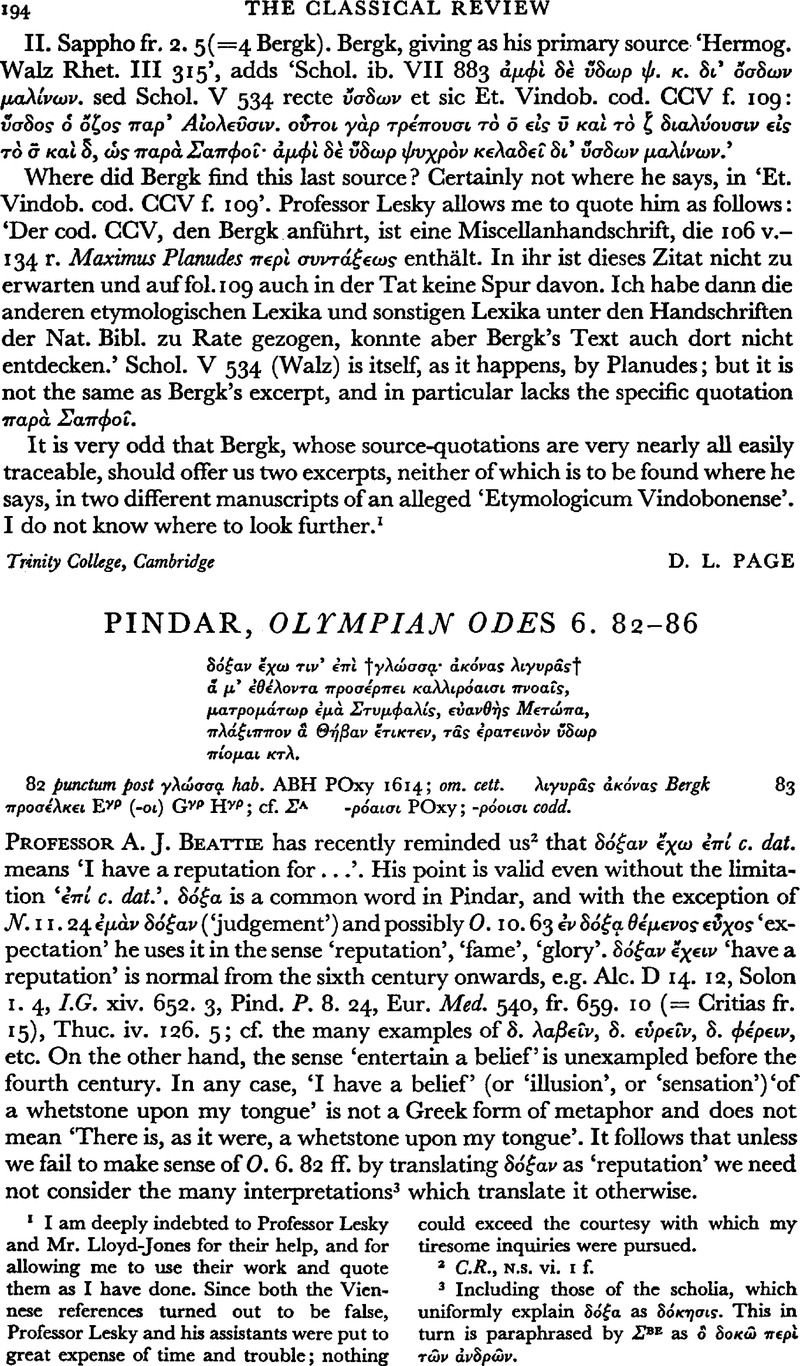No CrossRef data available.
Published online by Cambridge University Press: 13 February 2009

page 194 note 2 C.R., N.S. vi. 1 f.
page 194 note 3 Including those of the scholia, which uniformly explain δ⋯ξα as δ⋯κησις. This in turn is paraphrased by ΣBE as ὃ δοκ⋯ περ⋯ τ⋯ν ⋯νδρ⋯ν.
page 195 note 1 For Pindar's metaphorical treatment of γλ⋯σσα see Beattie, loc. cit., Woodbury, , T.A.P.A. 1955, p. 31Google Scholar, and Pearson, , C.R. xlv. 210Google Scholar. Of many examples, N. 7. 70–72 is perhaps the most striking.
page 195 note 2 So ΣBE: ![]() , and
, and ![]() .
.
page 195 note 3 In both, according to Turyn's stemma; but I am following Irigoin here.
page 195 note 4 Appositional phenomena discussed in Kühner–Gerth, i. 282. I A I, 284. 6, Schwyzer, ii. 615 Zus. I, may also have some relevance here.